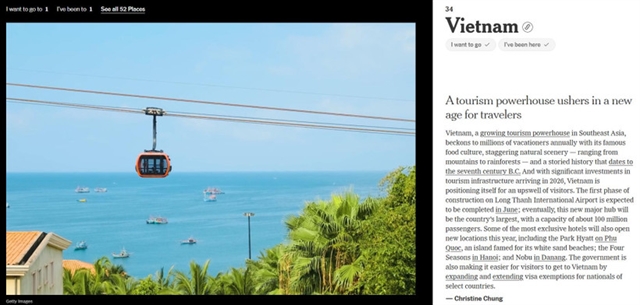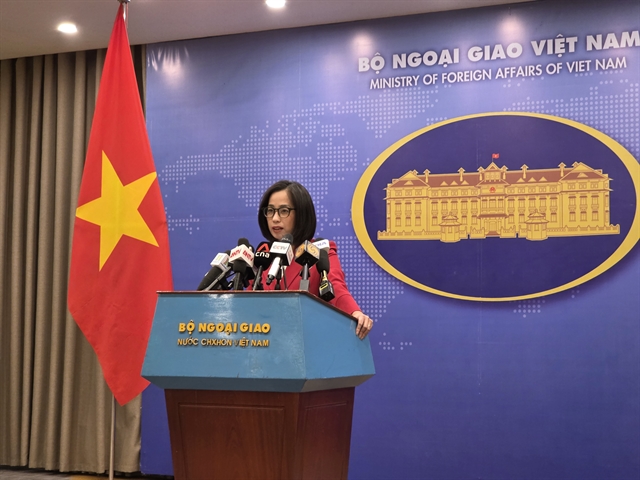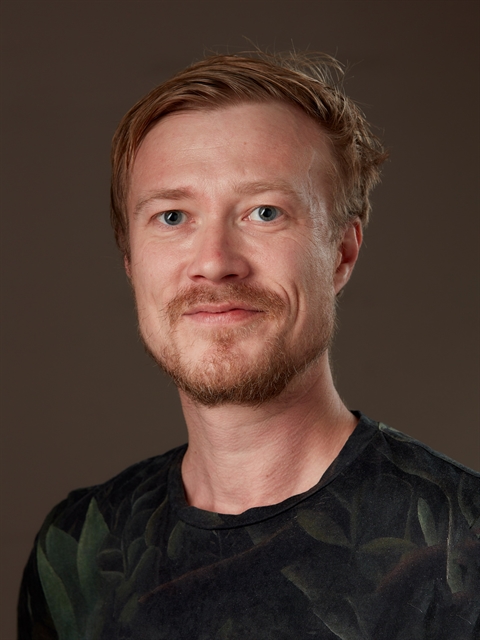 Life & Style
Life & Style

Tony Tran, 34, a Norwegian-Vietnamese choreographer and performer based out of Oslo, Norway.
The artist graduated from the Oslo National Academy of Arts and the Danish National School of Performing Arts Copenhagen in 2012.
His choreography research has consistently centred on masculine identities and their construction. His artistic works have toured in Europe, Asia and North America.
 |
| Choreographer Tony Tran. Photos courtesy of the tour organisers |
What brings you here to Hà Nội?
I am based in Oslo. I’m creating a dance project where I engage different artists and we create performances and we take the work and tour in Norway and out of Norway. In February 2020, I was in Yokohama for a performance art fair where I met a Vietnamese producer based in Hà Nội. We talked about bringing one of my works here to Việt Nam. Then we kept in touch during COVID-19 and we received funding from the Norway Arts Council and also funding from the Norwegian embassy in Việt Nam.
Please tell me about your family?
My parents were from Nha Trang. They came to Norway in 1981. I was born into Norwegian culture, fed by Norwegian society. We still talk to each other in Vietnamese at home. So my coming back this time is very special, it’s a good experience.
This is my fifth time to Việt Nam. But in previous trips, I came with my parents for two short weeks only to visit my parents’ relatives. This is my first time here alone. I have only been to Nha Trang, Đà Nẵng and Cam Ranh. It’s quite good to compare them to my first time in Hà Nội.
How do you see Việt Nam changing over time?
I think Nha Trang has changed super fast. It’s a growing economic city with new hotels, new big buildings, and also they are adopting changes quite quickly, especially the young generation. They are using new technology. Their cellphone use is the same as in the West.
What feature of Vietnamese culture do you still keep in your life in Norway?
The food is something that I keep. I like canh chua cá (sour fish soup with tomatoes) and bánh tráng cuốn (rice paper rolled with pork); the mutual respect that we have for each other as a family and also for other people.
Have you ever learnt about Vietnamese folk dances and applied them in your contemporary dances?
No, I have not really learnt Vietnamese folk dances. I have seen some on YouTube.
How did you feel when you were chosen to come to Việt Nam this time to celebrate the 50th anniversary of diplomatic ties between the two countries?
I’m so glad that they chose to support the tour. I understand that this is something rare.
Tobias Leira, a light designer, was educated in lighting design at the Dramatiska Institute in Stockholm, where he graduated in 2008. Since then, he has worked with lighting for performing arts at a number of theatres in Norway. Since his education, he has worked with dances, concerts and operas in Norway, Sweden and elsewhere in Europe.
 |
| Light designer Tobias Leira. |
Is this your first time in Việt Nam?
This is my first time. I think it’s very interesting that we are able to come here. One thing is that Tony's background is in Việt Nam. I also know a lot of Vietnamese people in Norway. So there is a strong link between Việt Nam and Norway. It’s important for me to learn more about Vietnamese people and it’s also good for locals to learn a little bit about Norwegian culture. I have tried some Vietnamese food in Norway, which is quite different from that here in Việt Nam. It’s much tastier here.
Tell me about your workshops later in Hà Nội and HCM City?
I’m excited to guide workshops about lighting in theatre. I have some teaching experience before, especially for teenagers. This time, I’ll aim on trying to explain what my work is like. I heard that normally lighting designers are not common in professional projects here. They have technician staff. So I’m not sure what to expect but I’ll also try to give them some guidance and see how to work with lights for a professional performance but also give them tasks so they can do practical work.
What do you think about the role of lighting in contemporary dances? How can it make contemporary dances different from classic and other genres of dancing?
I see light is a very important part of performances. You can create atmosphere and moods with the help of a lot of light, less light and colours, and you can also make drama in a piece. In some classic dances, minimalistic lights were used. But when more light is introduced, it can create a new atmosphere and create a mood for the piece. VNS




